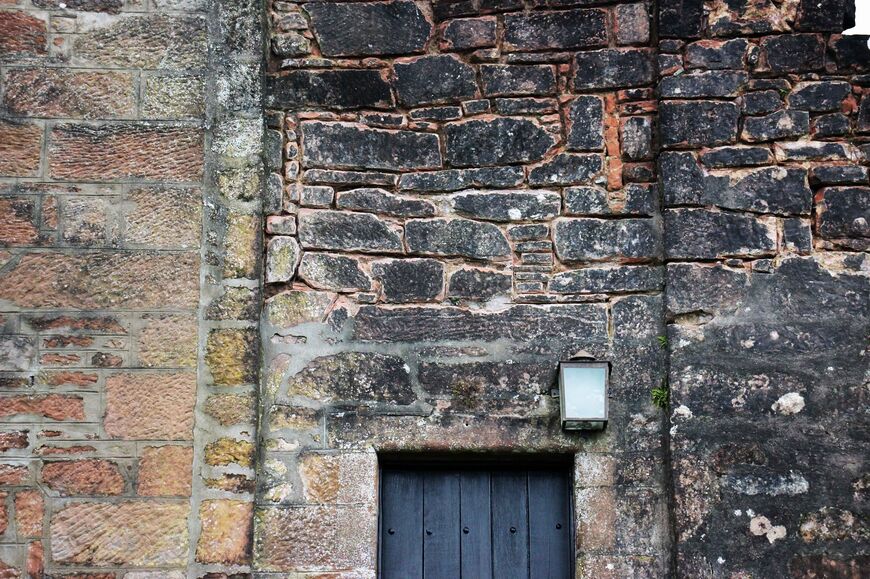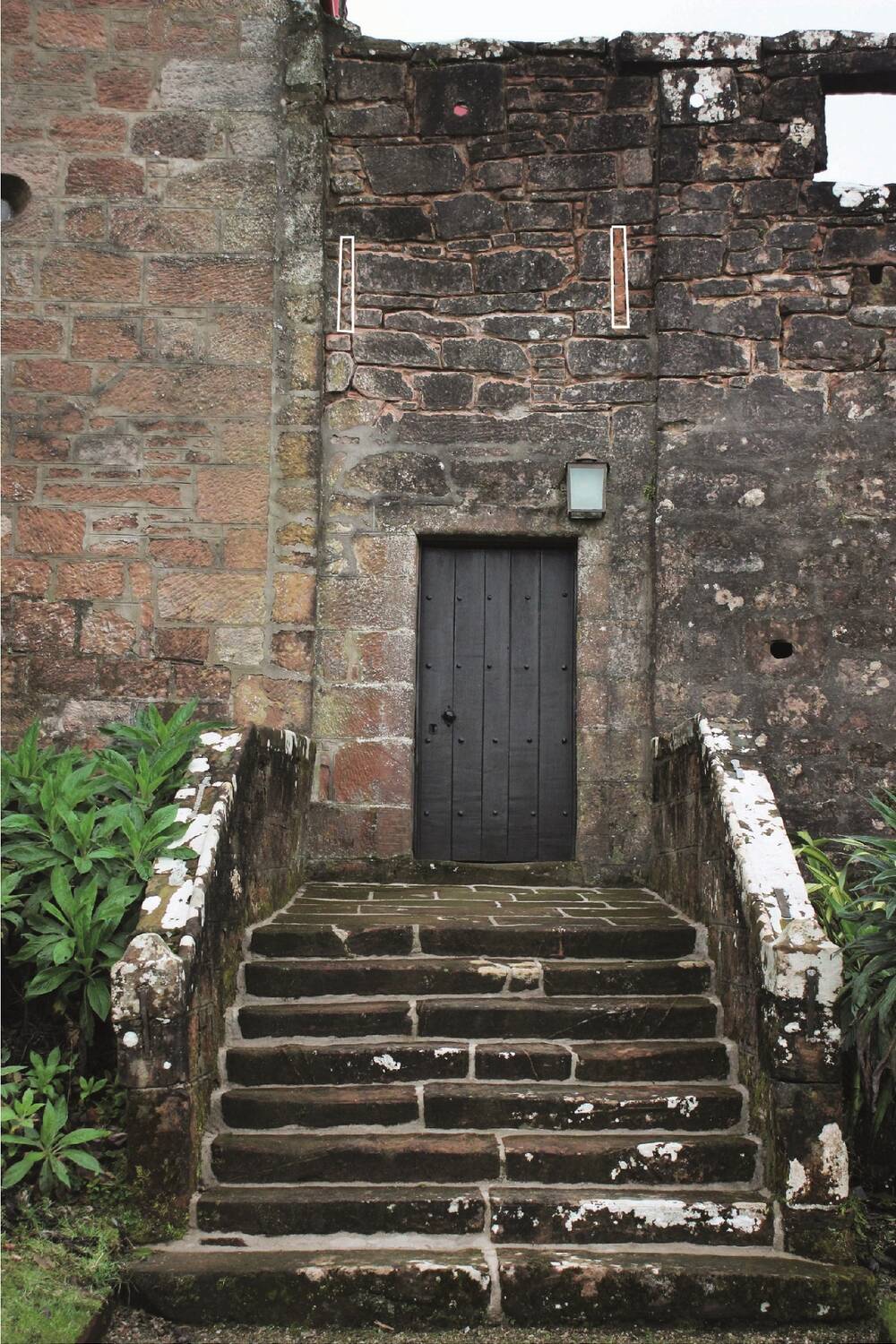
Brodick Castle: Evidence unearthed showing castle was protected by a 17th-century drawbridge
It was once a seat of the Dukes of Hamilton, and has seen many battles in its 800 year history. But now evidence has been unearthed showing Brodick Castle, on the Isle of Arran, was protected by an early 17th-century drawbridge.
Archaeologists discovered vertical slots above the entrance to Brodick Castle’s battery which are thought to have been the location for the chains used in the operation of a drawbridge.
The slots were previously hidden by a layer of cement, but were uncovered during restoration work to the castle.
Castle documents showed timber for the defensive structure was bought from Irvine in 1608, helping confirm the discovery.
‘This amazing piece of history was revealed while repointing the castle’s walls,’ said Derek Alexander, head of archaeology at the National Trust for Scotland.
‘Hidden by a layer of cement, these slots were only revealed when the joints were cleared of loose material in preparation for re-pointing with lime mortar.

‘Standing on the scaffolding, we noticed one slot and then another, each measuring about 50cm high by 5cm wide.
‘Looking down the wall face it was apparent they were located immediately above the main door into the battery. And then the penny dropped, or should we say the drawbridge.
‘It also explains why there is a stepped recess, around two metres wide and roughly 20cm deep, in the wall face – the drawbridge would have been raised into this recess to sit flush with the rest of the wall.
‘After further investigation and research, we were able to establish that the holes would have been used to hold the chains that raised and lowered a drawbridge to protect the main entrance to the castle.
‘Our records show the purchase of timbers from the mainland in the early 1600s that reinforces the theory of the presence of a drawbridge, but we’d always wondered where this would have been located.
‘It’s not every day that you find physical evidence of a previously unknown 17th-century drawbridge.’
The battery at Brodick was added to protect the main medieval access into the castle, providing a platform for muskets and small artillery pieces.
It was traditionally called the ‘Cromwellian battery’, which suggests a 1650s date, although there are now indications that there were earlier structures at this location.

The door through the battery was used as the main entrance into the castle, probably until Gillespie Graham’s re-modelling of Brodick in the 1840s, when the main entrance was moved to where visitors now enter.
It is thought that the drawbridge was replaced before this time with a simple timber doorway and a short flight of steps built against the wall.
Archaeology specialist Tom Addyman made the discovery.
‘The slots were most likely to have functioned as “rainures”, which is the technical term for the apertures through which chains would’ve been passed to enable the lowering and raising of a timber drawbridge,’ he said.
‘This conclusion was reinforced by the form of the eastern slot, which had a down-sloping base.’
The programme of conservation work to Brodick’s exterior in 2023, which was led by The National Trust for Scotland, is now nearing completion.
Read more News stories here.
Subscribe to read the latest issue of Scottish Field.
TAGS

